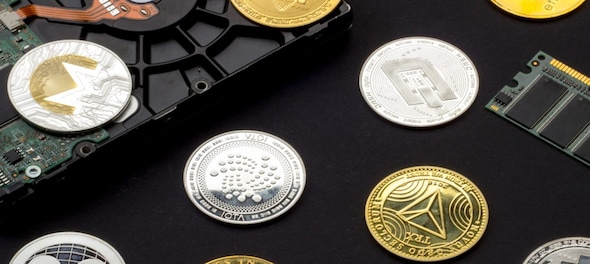
Picking altcoins is slightly different from picking out clothes or choosing a smartphone. It requires a little more thought and a lot more research. But with the proper guidance and knowledge, you should be able to pick and invest in the right altcoins without much of a hassle.
The term altcoin is a combination of ‘alternative’ and ‘coin’. It refers to crypto tokens introduced after Bitcoin. These coins share the same characteristics and framework as Bitcoin. For instance, both are peer-to-peer systems that run on similar if not the same code.
However, there is one significant difference between the two: the underlying ‘consensus mechanism’. Consensus mechanisms verify the authenticity of transactions occurring on the respective blockchains. The Bitcoin blockchain uses the energy-intensive Proof-of-Work (PoW) mechanism, whereas the newer altcoins run the eco-friendly Proof-of-Stake consensus mechanism.
In the PoW system, miners dedicate computing power to process transactions and earn rewards. In contrast, in the PoS system, miners pledge a specific amount of crypto to the blockchain’s development to qualify as authenticators.
Also Read | Explained: Proof-of-work vs Proof-of-stake mining and why Ethereum is transitioning to latter
How do you pick an altcoin?
Choosing an altcoin requires an understanding of the underlying utility value. Based on their unique functionalities, altcoins belong to various categories:
Mining-based altcoins: Altcoins earned through mining use the traditional PoW system. Here, computing power is dedicated to solving complex mathematical equations to decrypt and scrutinise transaction data. Some examples of mining-based altcoins are Litecoin (LTC), ZCash (ZEC) and Monero (XMR).
Stablecoins: Stablecoins aim to mitigate the effects of volatility associated with cryptocurrencies since their inception. Therefore, the value of these coins is linked to less volatile items such as metals, sovereign currencies (like USD) or other cryptocurrencies. Some examples of stablecoins are Tether (USDT), USD Coin (USDC) and Dai (DAI).
Security Tokens: As the name suggests, these tokens resemble traditional securities traded on stock exchanges. They are created to represent either the ownership of a specific security or its dividend. Since the associated asset is tangible, security tokens are usually very attractive for investors as they promise rapid appreciation in value.
Meme coins: Meme coins are so named due to their silly take on established and well-performing cryptocurrencies. They have no underlying fundamentals, and the sole promotion by celebrity figures or influencers propels their value. Some popular examples of meme coins include Shiba Inu (SHIB) and Dogecoin (DOGE), which gained value partly due to the tweets of Tesla CEO Elon Musk.
Utility Tokens: These tokens are associated with rewards, mining fees, and on-network purchases. However, these tokens do not offer any securities. For example, Filecoin (FIL) is a token used to purchase a decentralised network storage space.
How do you analyse altcoins?
Evaluating an altcoin is extremely important. It involves gathering all the possible information available on the cryptocurrency and the blockchain that it runs on. Here are some things investors should keenly look at when delving into altcoins:
For example, the Bitcoin whitepaper clearly states that it is “a decentralised digital currency, without a central bank or single administrator, that can be sent from user to user on a peer-to-peer network without the need for intermediaries.”
A whitepaper must also be written in flawless English, without which it raises red flags, and the cryptocurrency could be dubious.
In layman’s terms, the altcoin should provide enough incentive to attract investors so that the total supply decreases. High demand and limited supply lead to more demand, which leads to an appreciation in value.
Investors must dig deeper and find out what their background is. The developers’ credentials must be reliable, and if they have worked on successful projects in the past, it is a bonus. The project’s website and LinkedIn page are good places to find this information.
Some popular altcoins
Ether: This is the first altcoin to be released. The Ethereum blockchain introduced smart contracts and dApps (decentralised apps) to the world of cryptocurrencies.
Chainlink: This blockchain has done a one-up on the Ethereum blockchain and uses real-time data to make autonomous decisions. It allows smart contracts to communicate with other application programming platforms and make decisions by factoring in global developments.
Stellar Lumens: This blockchain has been created to unify global banking systems. It connects various disconnected payment platforms like Alchemy Pay and Single Euro Payments Area through a decentralised ledger.
(Edited by : Yashi Gupta)
Check out our in-depth Market Coverage, Business News & get real-time Stock Market Updates on CNBC-TV18. Also, Watch our channels CNBC-TV18, CNBC Awaaz and CNBC Bajar Live on-the-go!


Prajwal Revanna's father in custody for alleged kidnapping and sexual abuse
May 4, 2024 7:53 PM
Delhi, Indore, Surat and Banswara — why these are the most challenging domains for Congress internally
May 4, 2024 1:53 PM
Congress nominee from Puri Lok Sabha seat withdraws, citing no funds from party
May 4, 2024 12:00 PM
Lok Sabha Polls '24 | Rahul Gandhi in Rae Bareli, why not Amethi
May 4, 2024 9:43 AM

